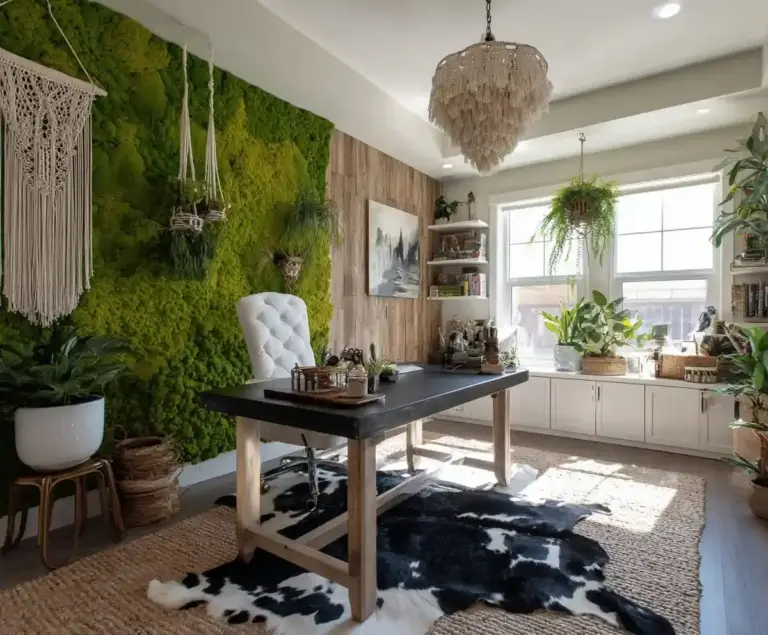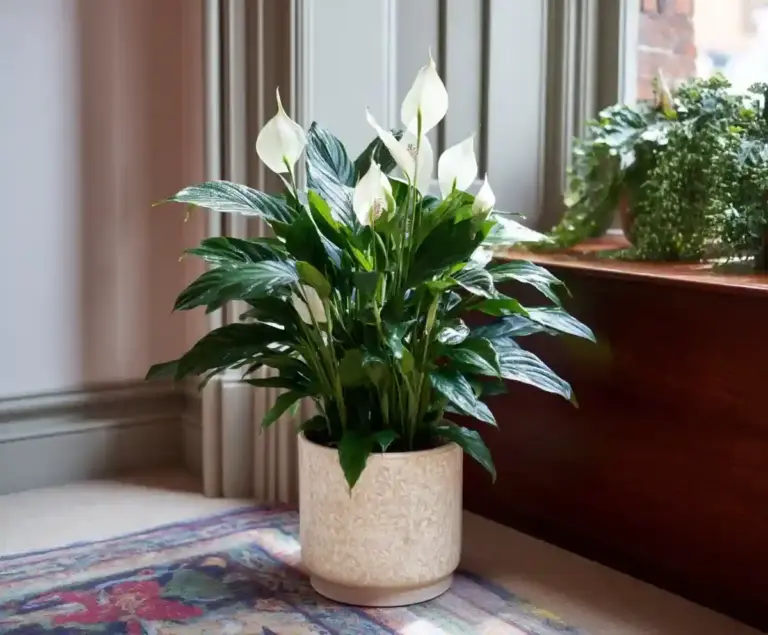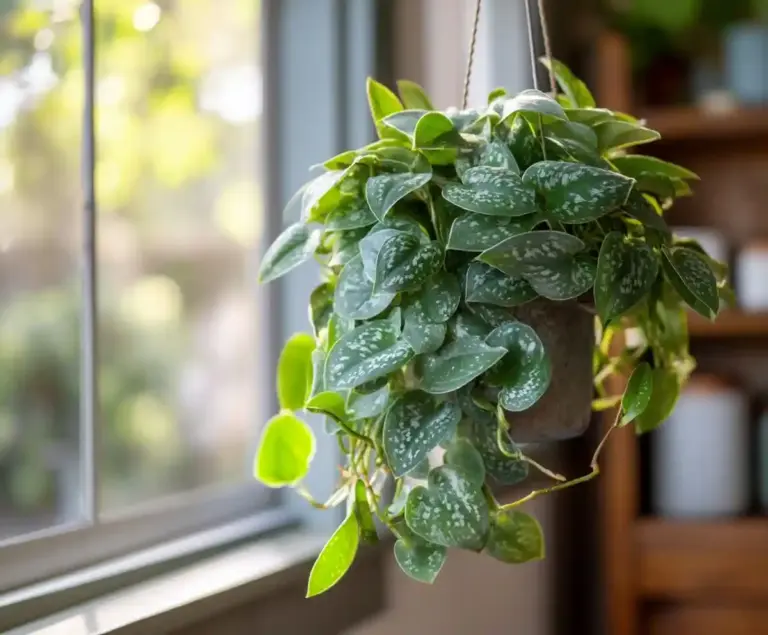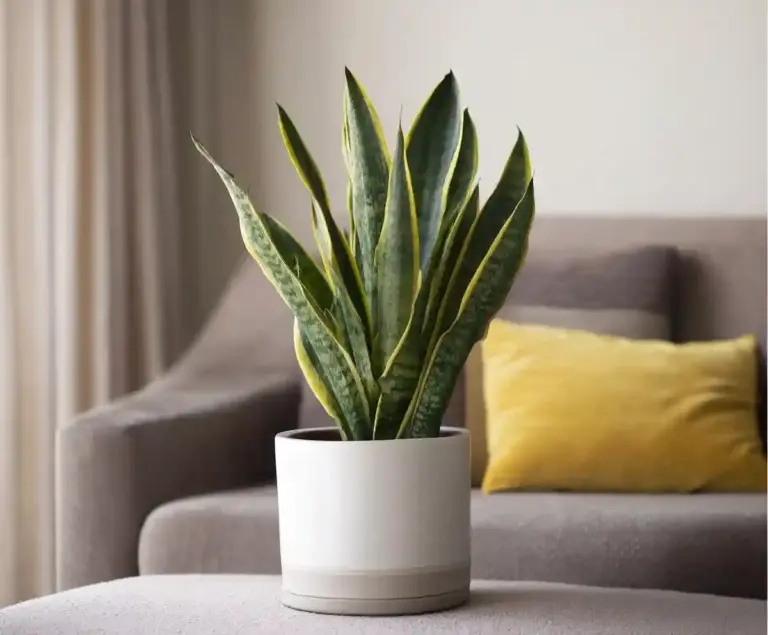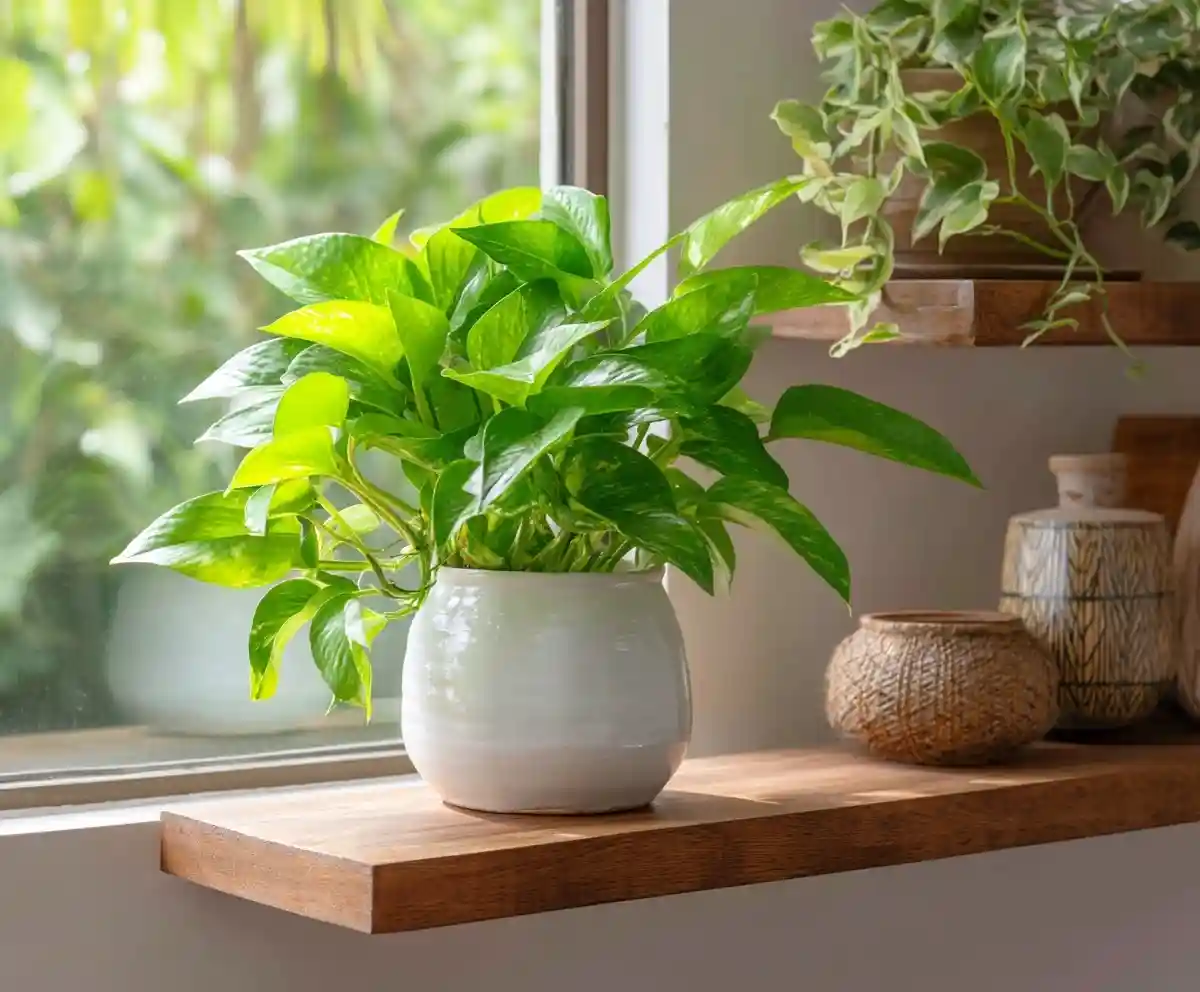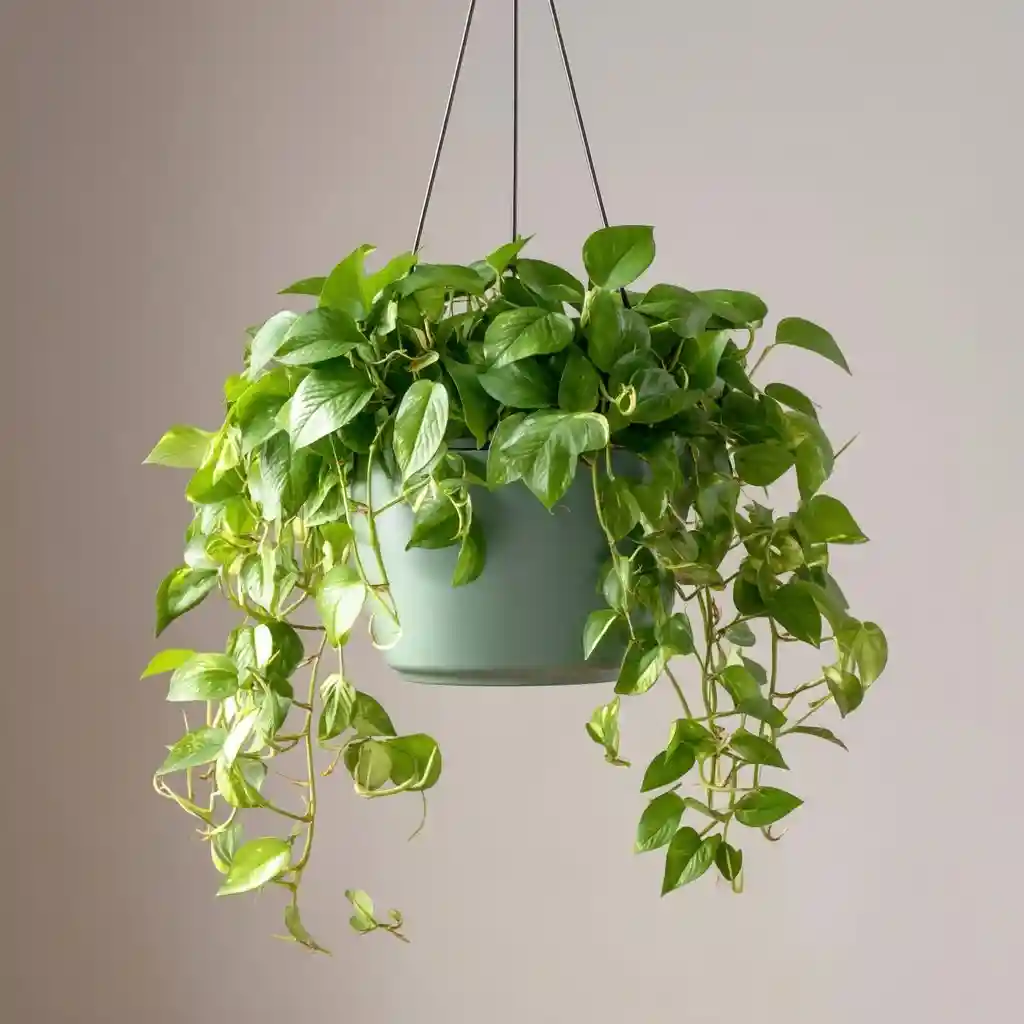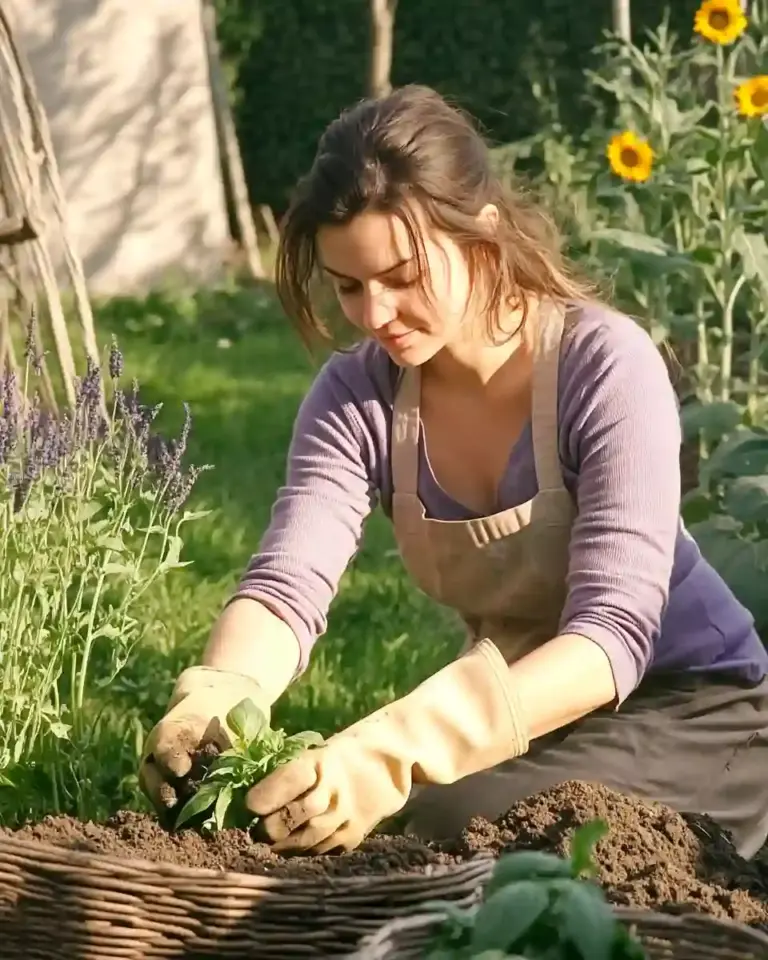Jade pothos care is simple, making this plant a favorite for both beginners and seasoned houseplant enthusiasts. Known scientifically as Epipremnum aureum ‘Jade’, this vining beauty is prized for its deep green, glossy leaves and hardy nature. Unlike its variegated relatives, jade pothos has solid-colored foliage, which allows it to thrive even in lower light.
Here are some quick facts about jade pothos:
- Common name: Jade pothos, Devil’s ivy
- Botanical name: Epipremnum aureum ‘Jade’
- Mature size: Up to 30 feet long indoors if unpruned
- Light needs: Bright, indirect light (tolerates low light)
- Soil type: Well-draining potting mix
- USDA zones: 10–12 outdoors (usually grown indoors)
- Toxicity: Toxic to pets and humans if ingested
This hardy houseplant not only adds lush greenery to your space but also tolerates a fair amount of neglect, which is why it’s often recommended as a starter plant.
Table of Contents
Jade Pothos Care
When it comes to jade pothos care, consistency is key but fussiness is not. This plant thrives in a wide range of home environments, adapting well to different light conditions, average humidity, and even the occasional missed watering. With just a few simple habits, your jade pothos will reward you with vigorous, trailing vines and lush green leaves.
To keep your plant in peak health:
- Provide bright, indirect light (though it tolerates low light).
- Use a well-draining potting mix.
- Let the top two inches of soil dry before watering again.
- Keep temperatures above 60°F and avoid drafts.
- Fertilize every few weeks during active growth.
This forgiving nature is what makes the jade pothos one of the most popular houseplants around.
Light

Light plays an important role in jade pothos care, but this plant is more adaptable than most houseplants. While it grows best in bright, indirect light, it can also tolerate low-light spaces, such as offices or north-facing rooms.
- Ideal placement: Near a window with filtered light.
- Avoid direct sun: Prolonged exposure to strong rays may scorch the leaves.
- Low-light tolerance: Unlike variegated pothos, jade’s solid green leaves absorb more light, making it better suited for dim areas.
If your plant starts to grow long, leggy vines, that’s a sign it’s reaching for more light. Moving it closer to a bright window usually solves the issue.
Soil
Proper soil choice is essential for healthy jade pothos care. These plants dislike “wet feet,” so drainage is the top priority. A standard indoor potting mix usually works fine, but improving aeration will help the roots stay healthy.
- Best mix: Well-draining, peat-free houseplant soil.
- Additives for drainage: Perlite, coco coir, or orchid bark to prevent soggy roots.
- Avoid: Heavy, compacted soils that trap excess water.
By keeping the soil light and airy, you’ll reduce the risk of root rot and create the perfect environment for strong, steady growth.
Water
One of the most important aspects of jade pothos care is knowing when—and how much—to water. These plants are drought-tolerant and far more likely to suffer from overwatering than underwatering.
- Rule of thumb: Let the top 2 inches of soil dry before watering again.
- Drainage matters: Always empty saucers so roots aren’t left sitting in water.
- Signs of thirst: Slightly drooping leaves usually indicate it’s time to water.
- Seasonal needs: In summer, watering may be weekly; in winter, far less often.
It’s better to err on the side of too little water than too much. Overly wet conditions can quickly lead to root rot.
Temperature & Humidity
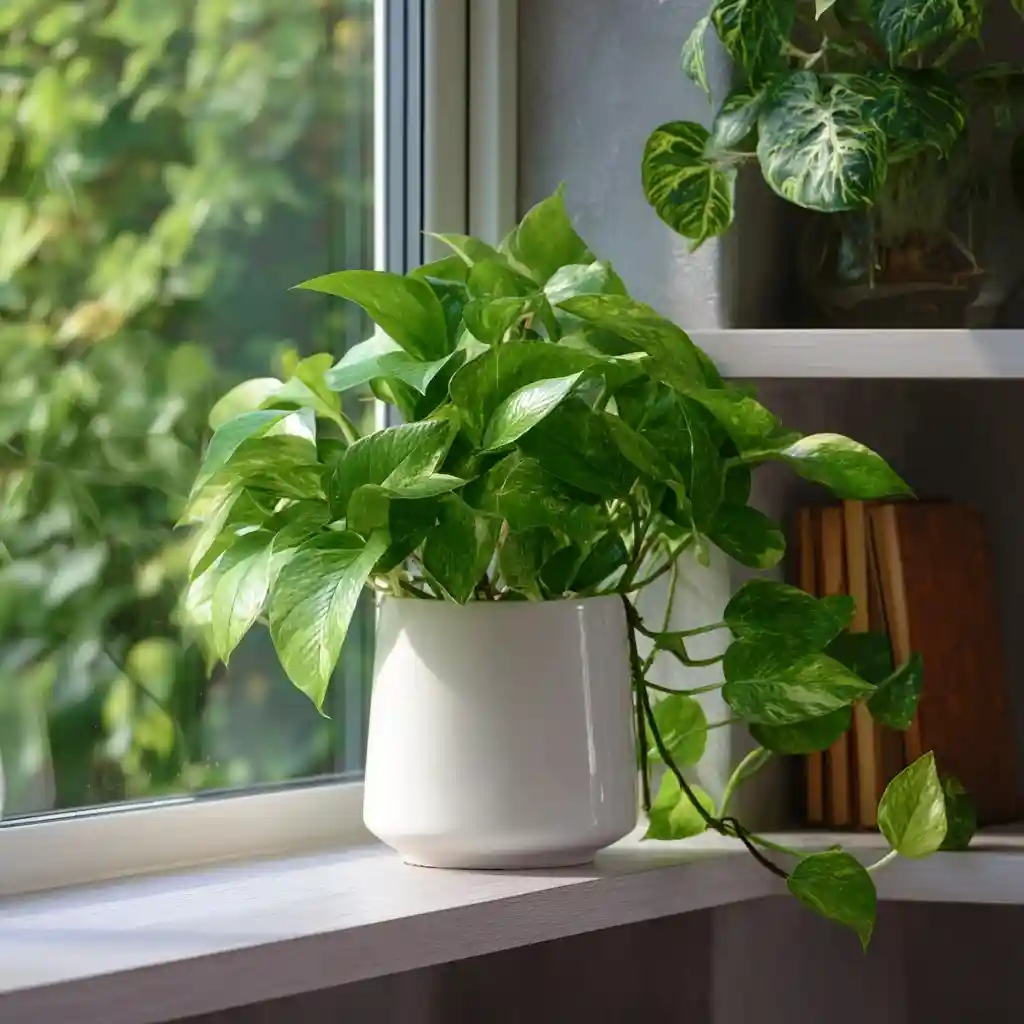
Stable conditions are another key part of jade pothos care. These tropical vines thrive in the same environment most people keep indoors, making them very low-maintenance.
- Temperature range: 65–80°F is ideal. They can tolerate down to 60°F but will suffer if exposed to anything below 50°F.
- Humidity: Average household levels are usually fine. Higher humidity encourages lusher foliage, but it isn’t required.
- Placement tips: Keep plants away from drafty windows, air conditioners, or heating vents, which can stress the leaves.
Bathrooms and kitchens often provide the perfect mix of warmth and moisture for jade pothos, even if natural light is limited.
Fertilizer
Feeding is a helpful but optional step in jade pothos care. These plants aren’t heavy feeders, but a little nutrition boosts their growth and keeps the leaves a rich, glossy green.
- Frequency: Every 4–6 weeks during spring and summer.
- Type: A balanced, water-soluble houseplant fertilizer at half strength.
- Winter care: Skip fertilizing during colder months when growth slows.
- Organic options: Fish emulsion or worm castings work well for a gentler feed.
Overfertilizing can harm more than help, so lighter, consistent applications are always better than strong doses.
Types of Jade Pothos
While jade pothos itself doesn’t have distinct cultivars, it’s often confused with other popular pothos varieties. Knowing the differences is important for proper jade pothos care and plant identification.
- Golden pothos (Epipremnum aureum) – Features green leaves with yellow streaks or speckles. Jade pothos, in contrast, is solid green and more drought-tolerant.
- Pearls and Jade pothos (Epipremnum aureum ‘Pearls and Jade’) – Recognized for its green-and-white variegation. Unlike jade, it needs brighter light to maintain its patterns.
- Jade satin pothos (Scindapsus pictus ‘Jade’) – A separate species with thicker, heart-shaped leaves. This one is rarer and can be harder to source.
Among these look-alikes, jade pothos stands out for its simplicity, adaptability, and classic deep-green foliage.
Pruning
Regular pruning is an easy step in jade pothos care that keeps the plant full and manageable. Since jade pothos can grow vines up to 30 feet indoors, trimming helps control its size and shape.
- Best time: Spring or early summer, when growth is most active.
- How to prune: Use clean, sharp scissors or shears to cut just above a leaf node.
- Benefits: Encourages bushier growth, prevents vines from tangling, and removes yellow or damaged leaves.
- Tip: Don’t throw away healthy trimmings—they make excellent cuttings for propagation.
A little pruning every few months ensures your jade pothos remains lush instead of stringy or overgrown.
Propagating Jade Pothos
Propagation is one of the most rewarding parts of jade pothos care. Since this plant can’t be grown from seed, stem cuttings are the go-to method. It’s quick, reliable, and lets you multiply your plant collection or share with friends.
Steps to propagate:
- Select a healthy vine and cut a 4–6 inch section just below a leaf node.
- Remove the bottom leaf to expose the node.
- Place the cutting in water, making sure leaves don’t touch the water.
- Wait for roots to grow 1–2 inches long (usually a few weeks).
- Transfer the cutting to fresh potting soil for long-term growth.
Alternatively, you can root cuttings directly in soil, though this takes longer and requires consistent moisture.
Potting & Repotting
Another important aspect of jade pothos care is repotting. These vines are fast growers and don’t appreciate being root-bound for too long. Repotting gives them fresh soil and space to stretch.
- When to repot: About once every 1–2 years, or when roots peek out from drainage holes.
- Pot size: Choose a container just one or two sizes larger than the current one.
- Soil refresh: Use a fresh, well-draining potting mix rich in organic matter.
- Handling roots: Keep the root ball intact as much as possible to reduce stress.
Repotting not only encourages stronger growth but also prevents drooping leaves caused by cramped roots.
Common Pests & Plant Diseases
In general, jade pothos care is pest-free, but stress from overwatering or poor air circulation can invite problems. The most common issue is mealybugs, which thrive in damp conditions.
- Signs of mealybugs: White, cottony clusters on leaves and stems.
- Treatment: Wipe leaves with a cloth dipped in mild soapy water or use insecticidal soap.
- Prevention: Avoid overwatering and ensure the plant has good airflow.
Fungal root rot can also occur if the soil stays soggy. Letting the soil dry between waterings and using a pot with drainage holes are your best defenses.
Common Problems
Even with proper jade pothos care, a few issues may appear. Most are easy to fix once you know the cause.
Leaves Turning Yellow
This usually means the plant is receiving too much water or direct sunlight. Let the soil dry more between waterings and keep it out of harsh sun.
Brown Tips
Dry air or underwatering can cause crispy edges. Rewater once the top two inches of soil are dry, but don’t allow the root ball to completely dry out.
Stringy Vines
Long, leggy growth signals the plant is reaching for more light. Move it closer to a window or prune it back to encourage bushier growth.
By making small adjustments, you can restore your jade pothos to full health.
FAQ
How fast does jade pothos grow?
With proper jade pothos care, vines can extend up to 12 inches per month during the growing season.
Can jade pothos grow outdoors?
Only in USDA zones 10–12. In most regions, it’s best kept as an indoor houseplant because it prefers warm, stable temperatures.
What plants look similar to jade pothos?
Philodendrons are often mistaken for pothos. The main difference: pothos leaves are thicker and glossier, while philodendron leaves are softer and more heart-shaped.
How long does jade pothos live?
On average, around 10 years. However, since it’s so easy to propagate, you can keep your jade pothos “alive” indefinitely by growing new plants from cuttings.
Conclusion
Jade pothos care is refreshingly simple, making this plant an ideal choice for anyone who wants reliable greenery indoors. With the right balance of light, water, and occasional pruning, it will reward you with lush, trailing vines for years. Whether you’re new to houseplants or expanding your collection, jade pothos offers both beauty and resilience in one easy package.
🌿 Love gardening inspiration? Follow me on Pinterest for bold plant ideas, tips, and seasonal color!
More Posts
